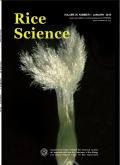Understanding Investigational Perspective of Antioxidant and Antibacterial Properties of Rice
IF 5.6
2区 农林科学
Q1 AGRONOMY
引用次数: 0
Abstract
Whole-grain rice has gained significant attention for its potential health benefits, particularly because of its antioxidant and antibacterial properties. Despite this growing interest, there remains a pressing need for a comprehensive evaluation of the methods used to analyze these bioactive compounds, considering the diversity of rice types and the influence of environmental factors. This review aims to provide an in-depth overview of recent analytical methods, particularly those employed over the last five years, to assess the antioxidant and antibacterial properties of rice. It focuses on commonly used antioxidant assays, such as the 2,2-diphenyl-1-picrylhydrazyl (DPPH) radical scavenging activity assay, which encompasses both single electron transfer and hydrogen atom transfer mechanisms. Other antioxidant assays are also discussed, alongside methods used to evaluate antibacterial properties, including disc diffusion, well diffusion, broth or agar dilution, and advanced techniques such as flow cytofluorometric and bioluminescent assays. The review further explores the bacterial strains most frequently studied, including Bacillus cereus, Listeria monocytogenes, Escherichia coli, and Salmonella species. It highlights the key techniques and parameters employed to ascertain and quantify the antioxidant and antibacterial potential of rice, while critically analysing the strengths and limitations of these approaches. By synthesizing current methods and offering insights into their application, this review can be served as a guide for future research aimed at standardizing and improving the assessment of rice’s bioactive properties, paving the way for broader scientific and practical applications.
水稻抗氧化和抗菌特性研究进展
全谷物大米因其潜在的健康益处而受到广泛关注,特别是因为它的抗氧化和抗菌特性。尽管人们的兴趣日益浓厚,但考虑到水稻类型的多样性和环境因素的影响,仍然迫切需要对用于分析这些生物活性化合物的方法进行全面评估。这篇综述的目的是对最近的分析方法进行深入的概述,特别是在过去的五年中,用于评估大米的抗氧化和抗菌性能。它侧重于常用的抗氧化测定,如2,2-二苯基-1-吡啶酰肼(DPPH)自由基清除活性测定,其中包括单电子转移和氢原子转移机制。其他抗氧化试验也被讨论,以及用于评估抗菌性能的方法,包括圆盘扩散,孔扩散,肉汤或琼脂稀释,以及先进的技术,如流式细胞荧光和生物发光试验。本文进一步探讨了最常被研究的细菌菌株,包括蜡样芽孢杆菌、单核增生李斯特菌、大肠杆菌和沙门氏菌。它强调了用于确定和量化水稻抗氧化和抗菌潜力的关键技术和参数,同时批判性地分析了这些方法的优势和局限性。通过对现有方法的综合和对其应用的见解,本综述可以为今后的研究提供指导,旨在规范和改进水稻生物活性特性的评估,为更广泛的科学和实际应用铺平道路。
本文章由计算机程序翻译,如有差异,请以英文原文为准。
求助全文
约1分钟内获得全文
求助全文
来源期刊

Rice Science
Agricultural and Biological Sciences-Agronomy and Crop Science
CiteScore
8.90
自引率
6.20%
发文量
55
审稿时长
40 weeks
期刊介绍:
Rice Science is an international research journal sponsored by China National Rice Research Institute. It publishes original research papers, review articles, as well as short communications on all aspects of rice sciences in English language. Some of the topics that may be included in each issue are: breeding and genetics, biotechnology, germplasm resources, crop management, pest management, physiology, soil and fertilizer management, ecology, cereal chemistry and post-harvest processing.
 求助内容:
求助内容: 应助结果提醒方式:
应助结果提醒方式:


